Crowbiters or Crow Biters
I have in my collection several postcards from a series dedicated to a very interesting craft that was widespread among the inhabitants of Kurishe Nerung - the Curonian Spit.
So, let's take a look at one of the cards. Who is this homeless-looking citizen in torn shoes, with a cigar in his teeth and an axe in his hand? Please love and favor him - this is a crow-biter, or Krajebieter, as the inhabitants of East Prussia called them.
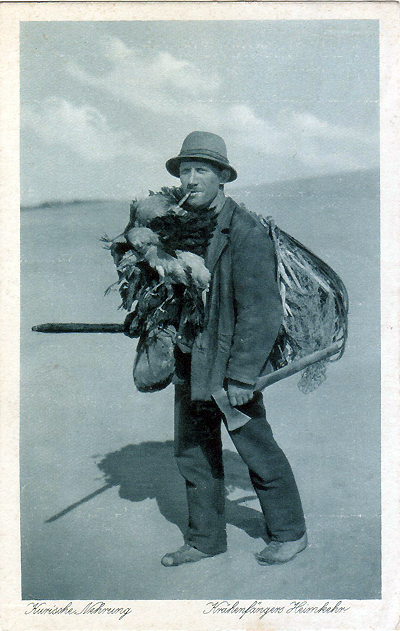
On the menu of the restaurant at the Konigsberg Continental Hotel, located on the Vorstedtische Langasse, there was a dish called Nehrungstauben — “pigeon of the [Curonian] Spit.” But there was no pigeon in this dish. Instead, salted crows caught on the Curonian Spit were served with a side dish of rice or sauerkraut. What had once been the food of poor Curonian fishermen had, thanks to technical progress, become an East Prussian specialty at the end of the 19th century (along with marzipan, klops, and flecks) and was served in expensive restaurants for a lot of money.
But once upon a time, the inhabitants of the Curonian Spit caught crows for one purpose - to somehow diversify their meager diet during cold and windy winters, when fishing was impossible.
A Russian traveler, passing through the Curonian Spit in the distant year of 1814, described the difficult life of a pastor from Rossiten (now Rybachy): "...his income is only enough for a meager, joyless life. He eats mainly fish and crows (the taste of which, by the way, is not so bad; there are a lot of crows here, and they, in the absence of other game or meat, are considered a delicacy)."
In autumn, flocks of crows, rooks and jackdaws flew over the spit from the European north to winter in the south (actually, even today the route of many European migratory birds passes over the spit). It was these that the Curonians caught in their nets.
This unique land fishing had to be done before dawn in order to reach the right place and settle there before dawn. It was necessary to build a shelter-hut, in which the crow catcher spent the whole day. The process of catching was simple. The bait consisted of several tame crows tied by the leg to a peg driven into the ground. They were put on a net sprinkled with sand, onto which fish entrails or grain were scattered.
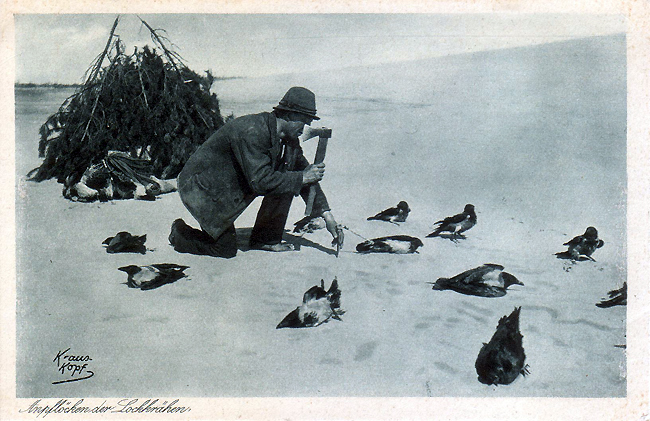
When a flying flock landed to feast, a hunter sitting nearby in a hut made of branches would pull the rope and the birds would end up in the net.
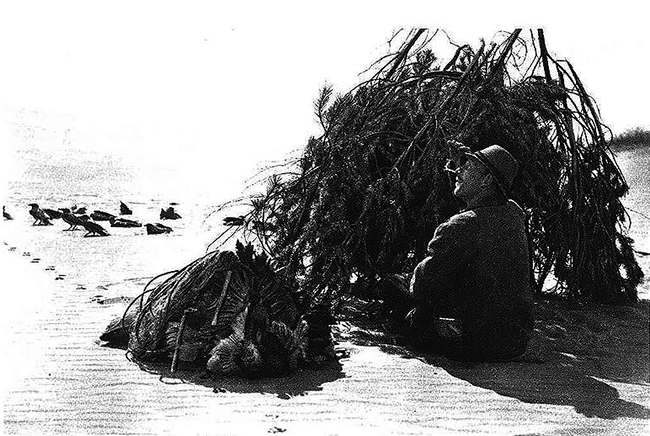
They were also tied to pegs and waited for the next flock. At the end of the hunt, the catcher killed the captured birds by biting their necks.
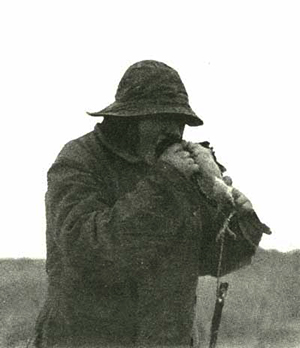
It is curious that now, describing this process, tolerant German authors always emphasize that the process of killing the poor birds was quick and painless (for example, flounder, which, as they say, was very successful for local residents. Despite the fact that crows were salted (and also smoked) not only by the Curonians, but also by the Kashubians of Pomerania, and the Lithuanians of the Memel region, and even the Livs of the Riga seaside, real recognition of the "pigeons of the spit" came at the end of the 19th century, when the Königsberg-Kranz railway was built, which gave the residents of Kurishe Nehrung the opportunity to sell crows at the Königsberg markets.
Rumor has it that at the beginning of the last century, salted crows were even exported abroad (I wonder where?).
In Königsberg restaurants you could still eat salted crows at the end of 1944. And soon the Red Army came to the city and punished all those who had so cruelly abused the birds.
By the way, history has brought down to our times the names of some crow-biters. One of them is Fritz Lemke (how can one not recall Captain Lemke from Mikhalkov's wonderful western "At Home Among Strangers") from the village of Loye, which is on the shore of the Curonian Lagoon.
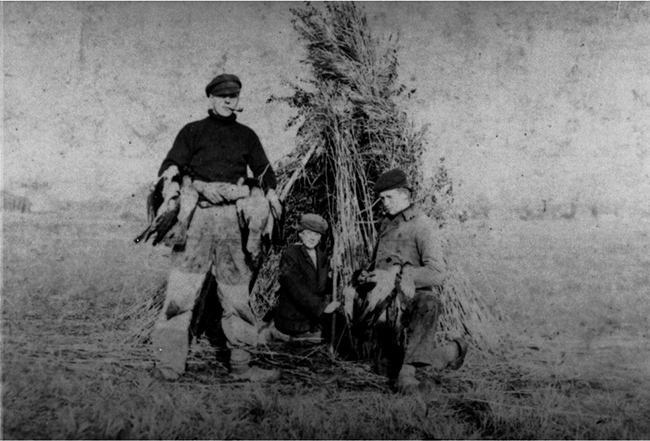
Crow-catching areas could be passed on by inheritance. Children, by the way, also took an active part in this trade.
But let's return to the beginning of our story, to the citizen in torn shoes and with a cigar, who became the hero of a whole series of postcards about Kraebiters. Surprisingly, his name has also remained in history: this is Albert Kull, born on October 11, 1896 in the village of Zarkau (Lesnoye) and died on February 2, 1968 in Freiburg im Breisgau. Photo from 1935. It was presented by Albert's daughter Irena Kull, also born in Zarkau in 1938, in August 2001 to the authors of a book with the simple title "Curonian Spit: Nostalgic Sketches" (A.D. Belyaeva, V.L. Belyaeva, Kaliningrad, 2004).
A couple of paragraphs from this book:
"The captured crows were tied to a peg and killed only in the evening, when the birds' daytime flight ended, with a bite to the skull. It was not a very aesthetic method, but it was fast and humane. That is why the crow catchers were called "Kreenbaiser" - crow biters. Young crows were especially tasty.
The first birds ringed by Professor I. Thienemann [ Johannes Thienemann (1863-1938) was an amateur ornithologist who founded the world's first ornithological station on the Curonian Spit near Rossiten in 1901; bird ringing continues at the Fringilla field station, named after the Latin name for the chaffinch. — admin ] were crows, which he bought from catchers.
Crows were also sold to large hotels and restaurants. They were a delicacy. … Plucked crows were salted for the winter."
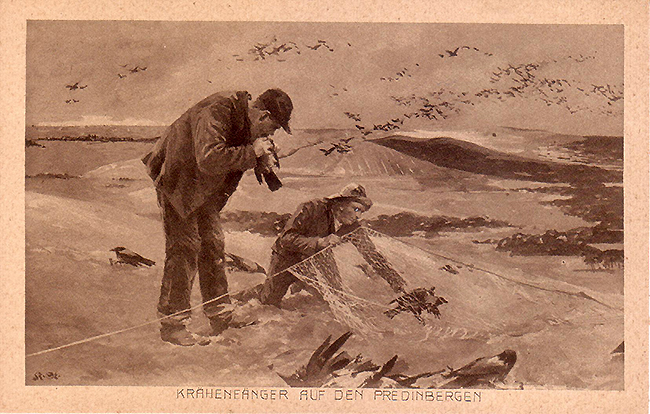
And a bit of poetry: the poem "Crow Catchers" by Gert OE Sattler
|
